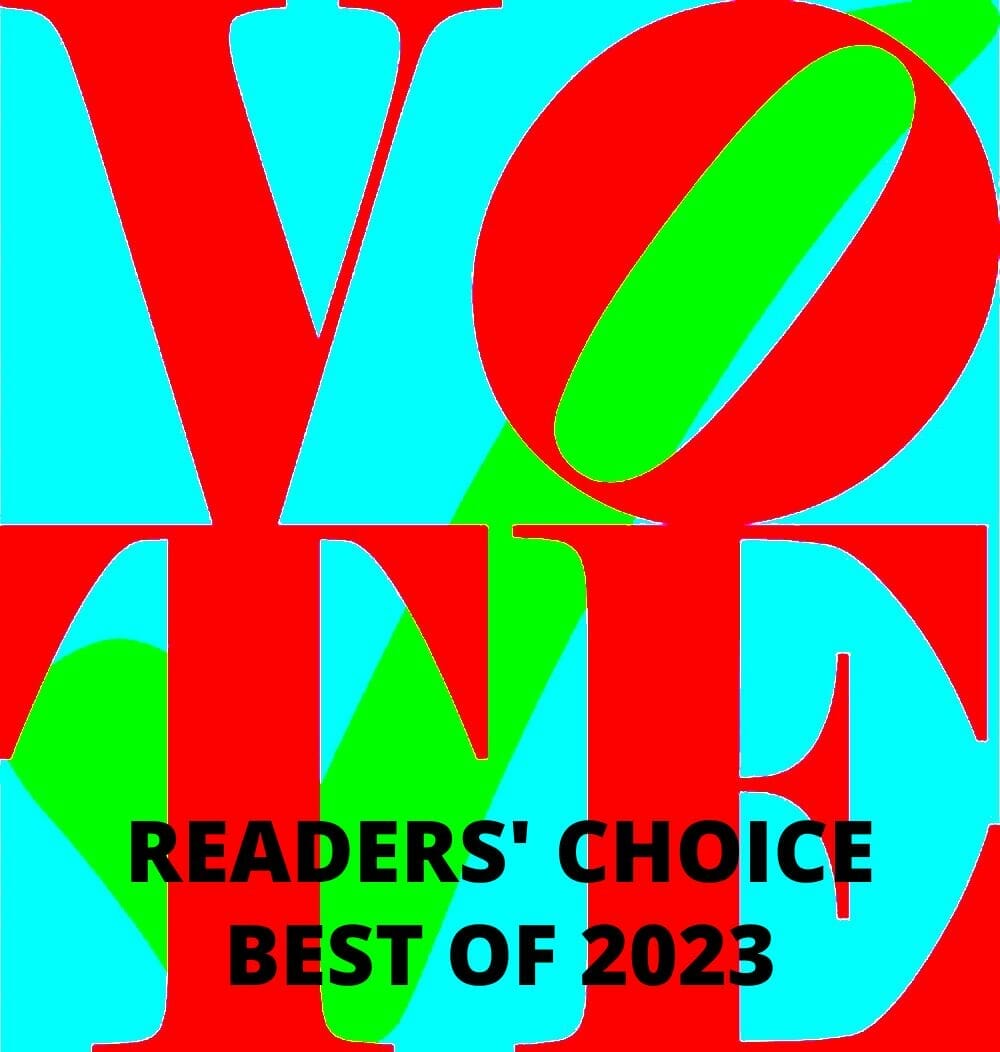EDITOR'S NOTE: Read the related story-- PARIS+ BY ART BASEL Review — Top Tier Euro-Centric Art
« …Beware of artists… «
So quips artist Giulia Andreani, whom Picture This Post first met via her work shown by Galerie Max Hetzler in the first-ever Art Basel fair in Paris, Paris+ by Art Basel. Her arresting paintings snagged our attention-- all of blue greys that suggest each image is a long lost archive treasure. We see oldie-time images of women that we do not recognize, but think we should.

Sometimes the women featured seem to be looking directly at us, as if they recognize we are looking at them.
In this writer/photographer team’s view, a trip to visit Giulia Andreani in her studio was an intriguing prospect.
Indeed!
Though her works themselves shouted to Picture This Post that Andreani is an impressive voice meriting a microphone, consider also that when you arrive at her studio near an artists’ ghetto near Sacre Coeur and nearby historic cemeteries, you first see a plaque noting that this studio building once housed Cézanne, among others. The decorative staircase in the building’s foyer was created by the namesake Eiffel of Paris’ most famous landmark.
Andreani refers to her atelier in this historic building as “…a calm place against the frenetic rhythm proper to our exterior world and to the contemporary art world…”. Talking to her there-- as you take in her studio surrounds of works-in-progress in every corner--you too may be awe struck by the grand size of the banquet table that would be needed to seat all who inform her artistic imagination.
From the first Italian woman to refuse to marry her rapist, to John Cage, to Bertoldt Brecht, and more--- Andreani’s frame of reference for her work seems vast and bottomless.
Here, Picture This Post (PTP) continues a conversation with Giulia Andreani (GA) about her process and why she dreads art veering into the realm of propaganda.
(PTP) Why do you feel an artist needs to have distance so as not to become a propagandist?
(GA) This distance is necessary first to avoid falling into pathos. Also, the artist can be an activist but distance is crucial to avoid that his work becomes a dogmatic banner for propaganda. The artist bears a great responsibility, in order to prevent the work from being used for other purposes.
… Brecht loved atlases (ABC of war). His work and his thought are very important to me. I think that his concept of Verfremdung (distancing) serves as a parallel with the distance I take when dealing with historical subjects, which therefore requires a thorough research phase. However, they are eventually used to reflect eminently topical questions.
How and why do you create catalogs and archives before you put brush to canvas?
This is the longest part of the work and I could write 500 pages to answer this question but let’s be synthetic.
For example, during my residency at Villa Medici in Rome I spent almost 6 months researching. I was hunting traces of the first women artists who were allowed to join this prestigious institution. It was created in 1666 and the first women artists working there only arrived in 1911.
Until my arrival in 2017, nearly no fellow had shown interest in these women artists. I focused particularly on Lucienne Heuvelmans, who was the very first woman to win the Prix de Rome.
For me, the year at the Villa Medici was also an occasion to define my relationship to archives: I like the idea of excavating precious and sometimes new sources and bringing them into my studio.
I like to say that in the elaboration phase "I give everything to painting". Differently from a researcher, a writer or even a journalist who would relay the sources in a long thesis, a novel or an article, I cannot grasp every single thing, and some of these things are paramount and can be called sensitive mystification or necessary trickery.
Let's say that I often focus on a single subject, over more or less long periods within the framework of a specific residency and/or for an exhibition.
But for some time now, archives have been gathered within my own studio. I call it my Atlas. It is made up of thousands of various documents that are not (yet?) arranged in Warburgian or Richterian boards but in archive boxes (some of them were even found by chance such as those that were going to end up in the garbage of the French Academy in Rome).
These days, for instance, I finished new pieces for the Consortium Museum. I used images that I collected ten years ago when I was an art history student working on the School of Leipzig and the relationship between European artists and the Cold War.
The piece that I am currently working on was also commissioned for the exhibition Chronorama that will take place in the Palazzo Grassi, Italy, next March. It is about interpreting one of the most important photographic collections in the world, that of Conde Nast. I also conducted researches from various archives (in particular from the Biblioteca Panizzi) about the workingclass struggle in post-war Italy. This is information provided by the documentalist of the Collezione Maramotti in Reggio Emilia, where I will have a solo show in October 2023.
How does your work embody your interests in history and feminism?
I focused on a practice consisting of using photographs as a model for paintings.
This was common in the XXth century but started earlier with artists such as Delacroix. Degas also painted a princess from a postcard (and that’s maybe the first painting where the artist wasn’t « hiding » the photographic source). This historic practice has been conceptualized by one the most important contemporary painters: Gerhard Richter.
I like conceptual Wanderung (I use the German word on purpose). During my final year at the Accademia di Belle Arti di Venezia, I read La chambre claire by the French philosopher and semiologist Roland Barthes. In my opinion, this book is a treasure that has urged me to explore this practice. Barthes describes how temporal photography is. The notion of « ça-a-été » (it-has-been) helped me in defining my own practice— painting can be seen as reactivating the dead temporality of photography. It’s about ghosts haunting our present. So, it’s about History. Or, more precisely, about how the constellation of small private stories (often hidden in family albums, private archives, or also in trash bins) are part of History with a big H.
Thinking of images through History is related to a deep thought on contemporary painting practices on one hand. (I think of course about works like Onkel Rudi by G. Richter but also about Stern by Marlene Dumas).
On the other hand, it is also the relationship between contemporary art and Feminism. I recently read a text by the French philosopher Nadia Yala Kisukidi who speaks about how little private stories are used as a resistance tool in a feminist and decolonial perspective.
A quote by feminist historian Michelle Perrot often comes to mind: “In the theater of History, women are weak shadows”. I believe that by representing anonymous or known women, I can counterbalance the secular injustice against women.
How has Italian Cinema become an inspiration for your work?
Paradoxically, I became interested in Italian independent film only when I arrived in France at 23 years old. I felt distance, far away from my native country. From France, I saw more clearly what had happened in postwar Italy, and in particular regarding history of art. In contrast to the desire for Tabula Rasa and to break free from ancient art, which also led to the rejection of figurative painting in contemporary art, ancient paintings were flourishing in the Italian movie productions: I particularly think of La Ricotta, one of Pasolini's first short films.
You have used the metaphor of slow cooking to describe your process. Could you elaborate on that for Picture This Post readers?
I like the idea of the studio as a calm place against the frenetic rhythm proper to our exterior world and to the contemporary art world. I also like to compare working in my studio to cooking because it ironically evokes the domestic injunction made to women. Valeska Gert called her cabaret "the witch's kitchen" and it is important to see how in the XXth century artists and activists reclaimed the image of the fattucchiera. Maybe, to some extent, this is a way to turn the orthodox and empirical research work into something different, which is not so far from cooking.
It’s as if the archival documents become the ingredients of a sorcerer's apprentice.
Having been an art student in one of the most institutionally anti-feminist and misogynist countries in Europe, Italy, Linda Nochlin’s writings like "why weren't there great female artists?", 1971, were a real discovery to me.
Addenda and Editor’s Note—
And that was EXACTLY the caption included in one of the Giulia Andreani works being exhibited at that time in the Paris Pompidou Centre for the prestigious Marcel Duchamp Prize, for which Andreani had won an invitation. The placard near her portrait of the Prize’s namesake sister, artist Suzanne Duchamp, reads “…Do we know that Marcel Duchamp’s sister was an artist?..”
Nominate this for The Picture This Post BEST OF 2023???
Click Readers' Choice!
For more information about Giulia Andreani, a recently published compendium of her works, and upcoming exhibitions, please visit the Galerie Max Hetzler GIULIA ANDREANI page.
All studio and surround photos by Peter Kachergis, unless otherwise indicted.


































